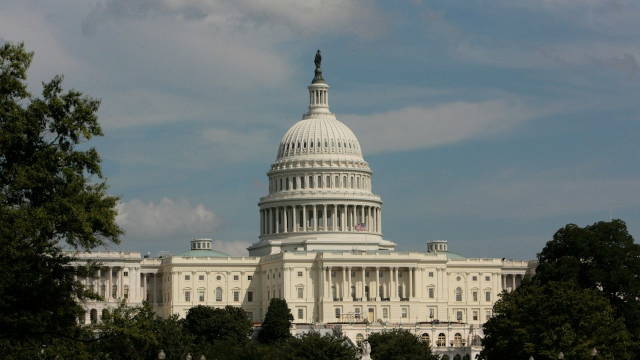Benefits in Jeopardy as Social Security Timeline Accelerates
Social Security’s financial future has taken another hit. The program’s main trust fund is now projected to run dry by 2033 — nearly a year earlier than previously anticipated — putting retirement benefits for over 61 million Americans at risk. Without intervention from lawmakers, benefits could be slashed by 23% once the fund is exhausted.
The latest annual trustees report, released Wednesday, outlines a sobering picture of the Old-Age and Survivors Insurance Trust Fund, which covers retirees and survivors. If current trends hold, the fund will no longer be able to meet full obligations by the time today’s 59-year-olds turn 67.
Policy Shifts and Demographics Drive Depletion
This accelerated timeline stems in part from the implementation of the Social Security Fairness Act in January. The policy expanded benefits for roughly 2.8 million public sector and government retirees, boosting expenditures. At the same time, government actuaries now forecast a persistently low birthrate and declining wage growth, both of which limit payroll tax revenues — the program’s financial lifeblood.
In contrast, the trust fund that covers disability benefits — which supports an additional 8.2 million Americans — remains solvent through at least 2099, according to the report.
Medicare Also Faces Strains
The trustees also flagged new concerns over Medicare. The hospital insurance trust fund that covers inpatient care is projected to become insolvent by 2033 — three years sooner than last year’s estimate. The earlier depletion is largely attributed to an uptick in hospital spending this year, a trend the report suggests may continue.

Trustees Urge Prompt Legislative Action
The report calls on Congress to address these funding gaps urgently. Phased reforms would give both workers and beneficiaries time to adapt, rather than forcing sudden, sharp cuts.
"Implementing changes sooner rather than later would allow more generations to share in the needed revenue increases or reductions in scheduled benefits." — Social Security and Medicare Trustees Report, 2025
Policy analysts, however, caution that the report may understate future challenges. It does not account for recent shifts under President Trump’s administration, including new tariffs and immigration crackdowns, both of which could further destabilize trust fund revenue streams.
Trump Policies May Worsen Projections
"The most important story is not in the report." — Kathleen Romig, Center on Budget and Policy Priorities
Romig noted the economic assumptions in the trustees’ report were finalized before Trump’s latest proposals, including tariffs and large-scale deportation plans. Both could depress payroll tax collections by slowing the economy and reducing the workforce, while rising prices could increase cost-of-living adjustments and strain payouts further.
A separate analysis last October suggested Trump’s immigration agenda could hasten Social Security insolvency by as much as three years.
Structural Demographics Undermine the System
The root issues go deeper. With Americans living longer and having fewer children, fewer workers are supporting a growing base of retirees. Meanwhile, a rising share of income escapes payroll tax collection due to a capped threshold — currently $176,100 — that hasn’t kept pace with wage inequality.
Despite campaign pledges to protect Social Security, Trump has not proposed substantive financing reforms. Instead, his administration empowered the Department of Government Efficiency (DOGE), led by Elon Musk, to implement sweeping job cuts at the agency — even as claims reached historic highs. The move left many retirees facing delays and confusion.
Musk argued that cracking down on inefficiency would strengthen the program.
"As a result of the work of DOGE, legitimate recipients of Social Security will receive more money." — Elon Musk, on Fox News
Yet experts dispute that cost-cutting efforts will have any meaningful financial impact. With overhead costs at just 0.5% and a fraud rate of 0.3%, Social Security is already among the most efficient federal programs.
"To even suggest that it is possible to solve the fiscal challenges faced by Social Security focusing only on fraud, waste and abuse is misleading at best and dishonest at worst." — Jason Fichtner, former SSA official
Options on the Table
According to the trustees, closing the long-term shortfall would require either:
- Increasing the combined payroll tax from 12.4% to 16.05% (a 3.65 percentage point hike), or
- Cutting all benefits by 22.4%.
Currently, workers and employers each pay 6.2% of earnings (up to $176,100). Social Security is legally barred from drawing on general federal revenues, making these structural fixes essential.
Most reform proposals combine a mix of tax increases and benefit adjustments. Republicans often push to raise the retirement age or reduce benefits; Democrats generally favor higher taxes on high earners.
Medicare’s Own Cliff
Medicare’s hospital trust fund faces similar long-term deficits. To remain solvent, lawmakers would need to:
- Cut hospital care spending by 9%, or
- Raise the associated payroll tax from 2.9% to 3.32%.
No such measures are under active debate in Congress. Meanwhile, other parts of Medicare — including doctor visits and drug coverage — are funded through the general budget and premiums, both of which are under mounting pressure as more baby boomers age into the system.
AARP Calls for Bipartisan Action
"Older Americans nationwide consistently say that the future of Social Security and Medicare are the issues they care about most, and they stand ready to hold politicians across party lines accountable to strengthen these programs for the long term." — Myechia Minter-Jordan, CEO of AARP
With trust funds ticking toward insolvency and no clear legislative path forward, the challenge for Congress is clear — act decisively, or face the consequences of inaction.






